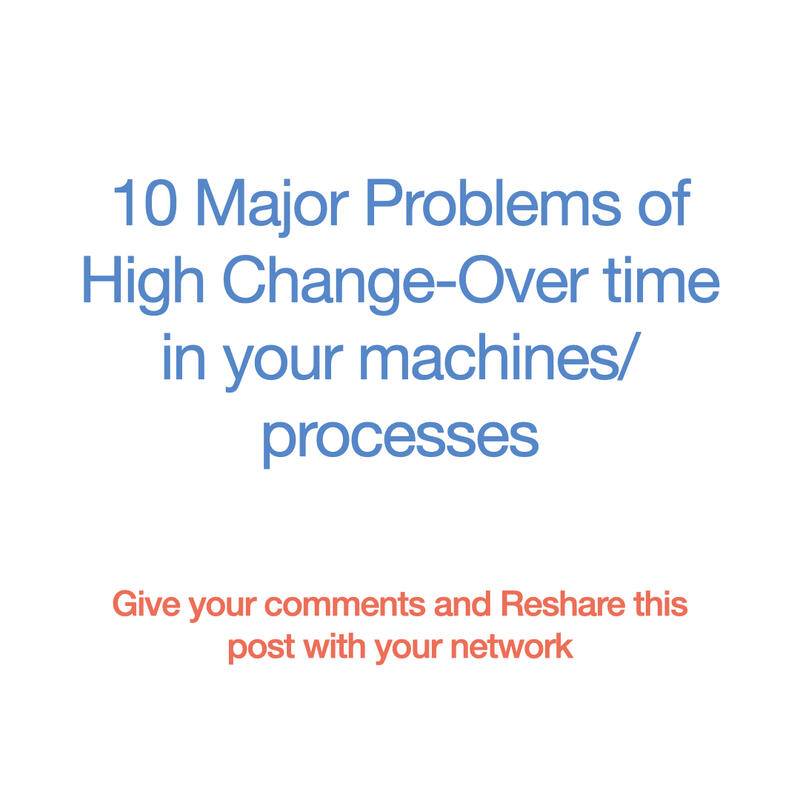In this post, I have listed 10 major wastes / issues created by high setup time.
1. Increases OverProduction – People don’t do frequent changeovers (as setup time is high) – increases WIP
2. High Working Capital Requirement for running the unit
3. High WIP results in high space requirement in the shop floor
4. People won’t get trained in setups as they don’t do setups frequently – resulting in high variation in setup time and poor quality setups / lot of adjustments
5. Increases Waiting Waste (of materials and manpower) – during setup
6. Continuous Flow Production would be difficult – as the setup time is high
7. Load Levelling (Heijunka) becomes difficult – infrequent changeovers leading to large batch size – some products will not be produced (as required) to meet the demand
8. High Risk of Product Obsolescence – Changes in specification would make the WIP obsolete
9. Managing the shop floor becomes complex and creates confusion among the team members
10. Excess manpower required to run the unit (monitoring WIP, Excess handling)
Solution: Use Single Minute Exchange of Dies (SMED) to reduce the changeover time. You can learn about SMED here
You can also read this article in Linkedin here
Cheers,
Ananth


Join 3500+ Professionals who receive our Weekly Newsletter containing Simple and Practical ideas to help achieve Results in their companies.
Hash Management Services LLP, 2023 © All Rights Reserved